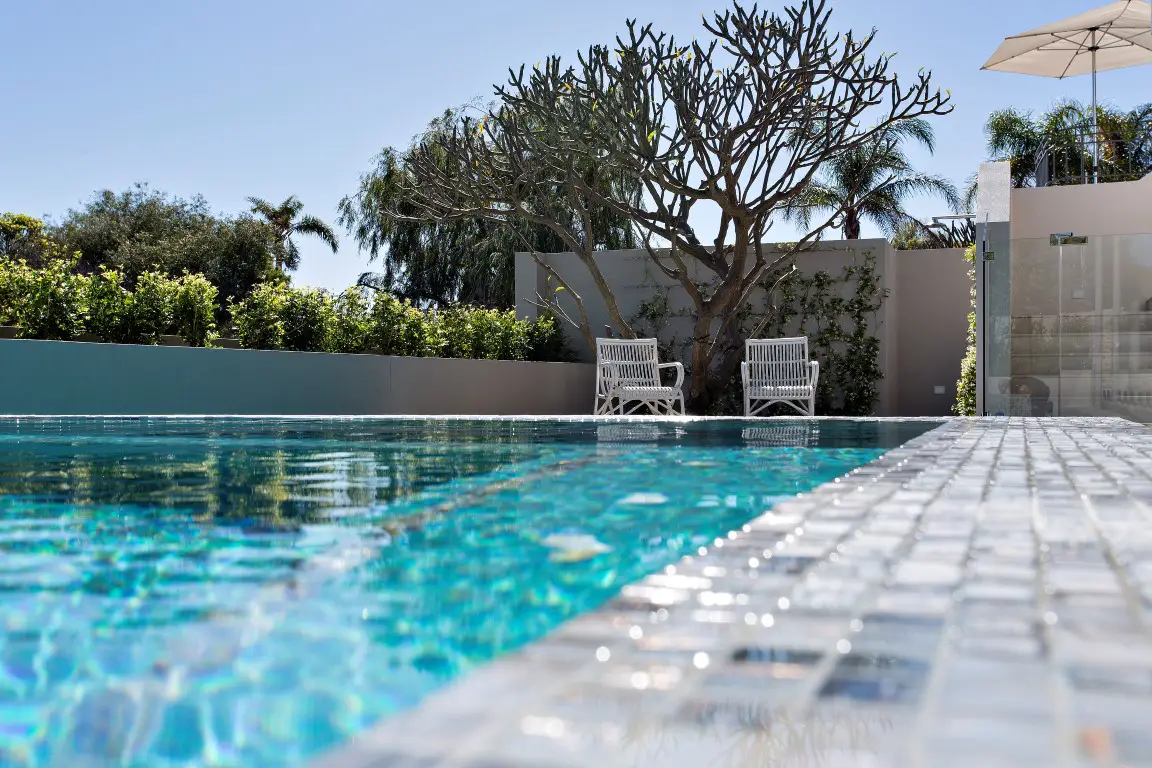
Why Tile your Pool?
Fully tiling a pool is certainly regarded as the premium finish for concrete pools. Traditionally associated with high-end building projects, tiled pools have become more affordable and offer savings when considering the lifetime value of the product.
Tiles are extremely durable as well as offering almost limitless design choices. They look fantastic, are easy to maintain and most importantly, are gentle on your feet due to their silky smoothness.
Appearance
Tiles have an appealing glamour to them. Now days, many mosaic tiles have special visual effects that can lift your colour choice and add sparkle and depth to your swimming pool. By using mosaic tiles, you can widen your design choice and have a variety of effects and colours happening in different areas of your pool. You can choose to contrast or blend your tiles with the water colour and your surrounds to create a stunning finish.
Less maintenance
Fully tiled pools are easier to keep clean than cement based rendered surfaces such as pebblecrete used in concrete pools. Glass tiles in particular, have a high resistance to mould, mildew and pool chemicals.
Safety
Tiles are the gentle option on your feet and skin. They are also less abrasive on your swimwear. Some brands of mosaic tiles offer slip resistant tiles that can be used on submerged steps and ledges to give a more secure grip for your foot. By using a contrasting coloured tile around the edge of steps, submerged ledges and swim outs you can reduce the possibility of accidents from swimmers jumping in and not seeing the object under the water.
Value for money
When you choose the option to fully tile your pool, you can gain some comfort from knowing that it is the premium option in swimming pools finishes. Your money has been invested well and your fully tiled pool will add to the resale value of your property. Tiled pools offer long term savings also with a guarantee that they will last for 25years compared to using less durable materials such as plaster which tend to need resurfacing every 7-10 years.
